Fayetteville and Cumberland County - The Early Days
Cumberland County began as a settlement in the Upper Cape Valley between
1729 and 1736 by European migrants known as Highland Scots. The area
became a vital transportation link to other major settlements with a
receiving and distribution center established in 1730 on the Cape Fear
River. This settlement was known as Campbellton. This village on the banks
of the Cape Fear River prospered in its early days but soon stood in the shadow
of the blossoming trading community of Cross Creek, about a mile west of
Campbellton.
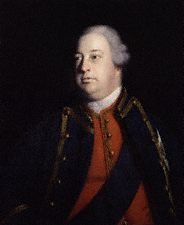 The Colonial Legislature passed an Act in 1754 which resulted in the
political division of Bladen County, thus forming Cumberland County. It
was named in honor of William Augustus, Duke of Cumberland, third son of King
George II. Cumberland was commander of the English Army at the Battle of
Culloden, in which the Scotch Highlanders were defeated in 1746. The
county continued to grow and prosper as the Scotch-Irish, Germans and Moravians
also entered the area. The Colonial Legislature passed an Act in 1754 which resulted in the
political division of Bladen County, thus forming Cumberland County. It
was named in honor of William Augustus, Duke of Cumberland, third son of King
George II. Cumberland was commander of the English Army at the Battle of
Culloden, in which the Scotch Highlanders were defeated in 1746. The
county continued to grow and prosper as the Scotch-Irish, Germans and Moravians
also entered the area.
 The county seat was first called Cumberland Court House. In 1762
a county court house was established at Campbellton. In 1765, Cross Creek
village was settled and in 1778 after Cross Creek and Campbellton were joined a
new courthouse was ordered to be erected in that part of town known as Cross
Creek. The county seat was first called Cumberland Court House. In 1762
a county court house was established at Campbellton. In 1765, Cross Creek
village was settled and in 1778 after Cross Creek and Campbellton were joined a
new courthouse was ordered to be erected in that part of town known as Cross
Creek.
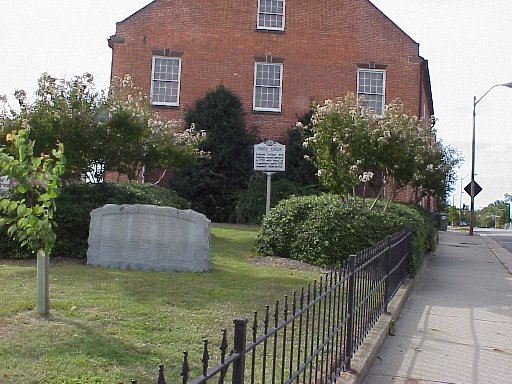
On
June 20, 1775, thirteen months before the signing of the Declaration of
Independence at Philadelphia, a group of fifty-five Patriots known as the
Cumberland Association gathered in a building at the intersection of Bow and
Franklin streets at Cross Creek for the signing of what was to be called "The
Liberty Point Resolves". The site of the signing is
appropriately called "Liberty Point". Only a portion of
the "Point" remains. The building in which the Resolves was
signed no longer exist.

Political
divisions in the population were pre sent. Scottish heroine Flora Mcdonald, a year later in February 1776, rallied troops loyal to the
British cause. sent. Scottish heroine Flora Mcdonald, a year later in February 1776, rallied troops loyal to the
British cause.
In 1781, during the American Revolutionary War, General Cornwallis and the
British Army, after the Battle of Guilford Court House, stopped at Cross Creek
for the night before marching on to Wilmington. 
Af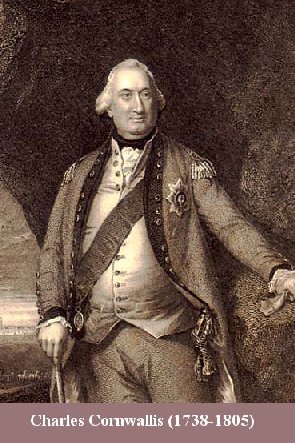 ter the Revolution, with no permanent state capital, the legislature
periodically met in Fayetteville. ter the Revolution, with no permanent state capital, the legislature
periodically met in Fayetteville.
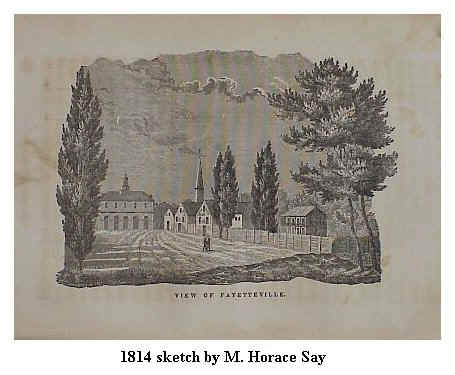 The State House was built in 1789
for the meeting of the Constitutional Congress. It had met in Fayetteville
in 1783, 1788 and again in 1790. Fayetteville was thought of as the state
capital. The constitution was defeated in 1788 but in 1789 it was ratified
in Fayetteville. The Charter of University of North Carolina was granted
at Fayetteville. For an interesting story about this building and Lafayette,
see "State House" on this site. The State House was built in 1789
for the meeting of the Constitutional Congress. It had met in Fayetteville
in 1783, 1788 and again in 1790. Fayetteville was thought of as the state
capital. The constitution was defeated in 1788 but in 1789 it was ratified
in Fayetteville. The Charter of University of North Carolina was granted
at Fayetteville. For an interesting story about this building and Lafayette,
see "State House" on this site.

In 1783,
the community of Campbellton and the village of Cross Creek joined together and took the name of Fayetteville to honor the Revolutionary
War hero, the Marquis de
Lafayette, the first in the nation to do so. The
Marquis later visited Fayetteville in 1825 in recognition of the honor. The
carriage in which he rode is lovingly preserved by the Fayetteville Independent
Light Infantry. An account of his visit can be read in the "Lafayette in Fayetteville"
page on this site.
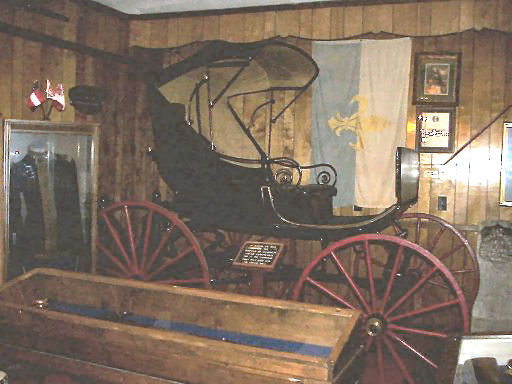
Fayetteville's growth was delayed by the "Great Fire of 1831" in
which over 600 buildings were burned including the State House, later called the
Town House. When
rebuilt and completed in 1838 it was then called the Market House.
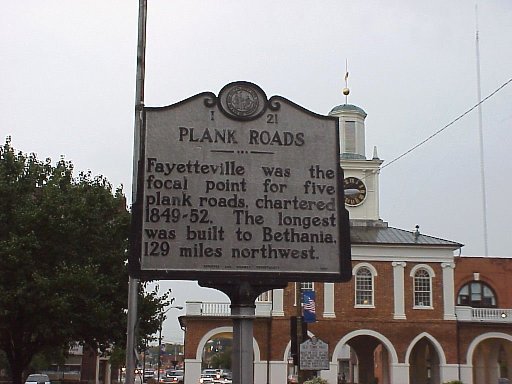
Fay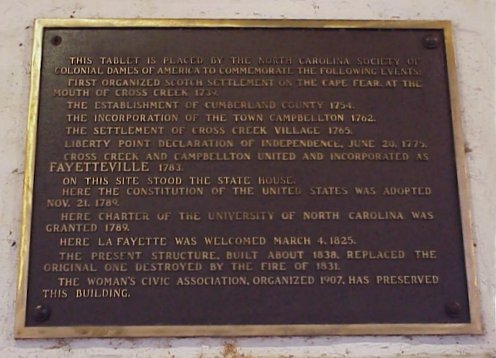 etteville, once a candidate for a permanent state capital, in need of
trade and reacting to the first two railroads bypassing the town, became
involved with the plank road movement. In 1849, the largest of these
projects was the Fayetteville & Western Plank Road Company receiving its
charter from the state legislature. The road extended from the Market
House to the Moravian settlement of Bethania, near Salem. This was just
one of several plank roads built from Fayetteville. etteville, once a candidate for a permanent state capital, in need of
trade and reacting to the first two railroads bypassing the town, became
involved with the plank road movement. In 1849, the largest of these
projects was the Fayetteville & Western Plank Road Company receiving its
charter from the state legislature. The road extended from the Market
House to the Moravian settlement of Bethania, near Salem. This was just
one of several plank roads built from Fayetteville.
In the decade between 1849 and the Civil War about 500 miles of plank road
was built over the state. Tolls were charged farmers and merchants using
these roads. Due the growth of the railroads, toll-dodging and cost
of maintenance, the roads failed to be profitable. When the Civil War came
the roads were abandoned.
In 1865, during the Civil War and after the burning of Atlanta the city was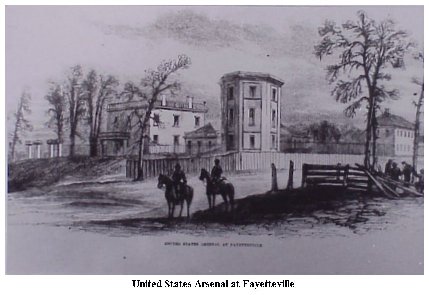 in the path of General Sherman's
Union troops. Before leaving they had wreaked destruction and burned the
North Carolina Arsenal which had been a munitions center for the
Confederacy. The South was laid desolate. Recovery for Fayetteville after the Civil War was difficult as it was
with other Confederate states. in the path of General Sherman's
Union troops. Before leaving they had wreaked destruction and burned the
North Carolina Arsenal which had been a munitions center for the
Confederacy. The South was laid desolate. Recovery for Fayetteville after the Civil War was difficult as it was
with other Confederate states.

Aiding the recovery was the opening of Camp Bragg. In preparation for
World War I the post came into existence comprising 127,000 acres of desolate
sand hills and pine trees. Adequate water, rail facilities and climate
served the Army needs and Camp Bragg emerged as a field artillery site on August
21, 1918. The Camp was named in honor of Confederate General Braxton Bragg, a
former artillery officer and North Carolina native.
A year later, an aviation landing field called Pope Field was added.
The field was named for First Lieutenant Harley H. Pope, who was killed when his
JN-4 Jenny crashed in the Cape Fear River.
Congress decided in February 1922 that all artillery sites east of the
Mississippi River would become permanent Army post. The Camp was renamed
Fort Bragg on September 30, 1922. The camp grew slowly, reaching a total
of 5,400 soldiers by the summer of 1940.
More coming

Fayetteville during the Civil War
Fayetteville - The Town We Knew

Fayetteville - Present Day
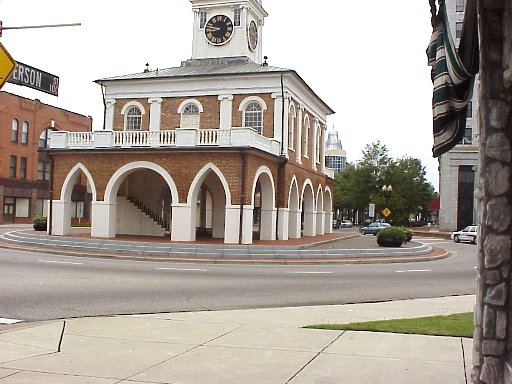
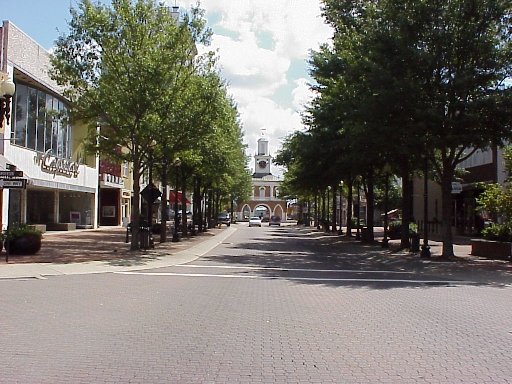
MARKET HOUSE
HAY STREET
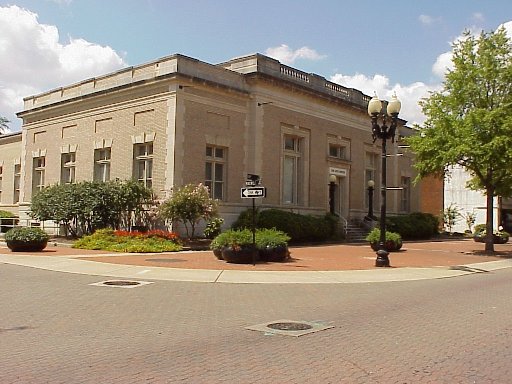
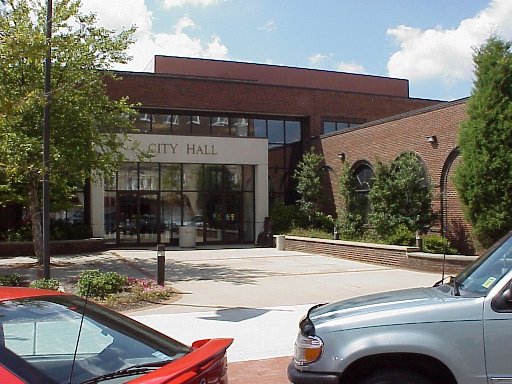
ART MUSEUM (formally Post Office)
CITY HALL

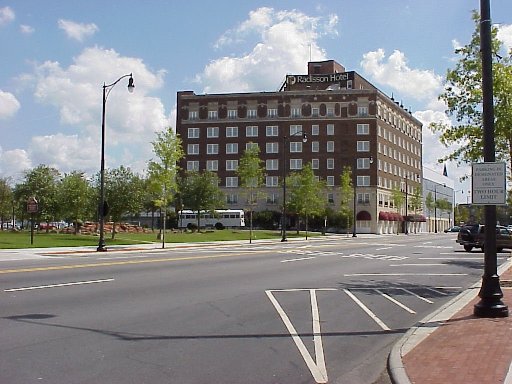
CITY PLAZA - POLICE DEPARTMENT
PRINCE CHARLES HOTEL

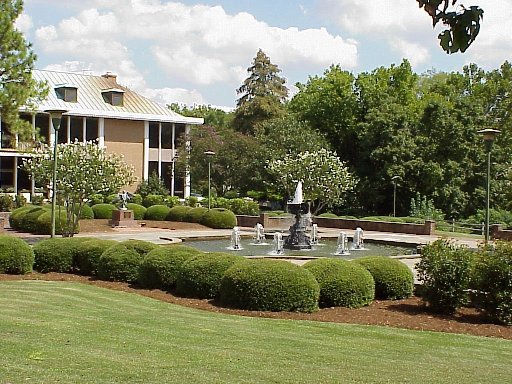
AIRBORNE MUSEUM
LAFAYETTE PARK
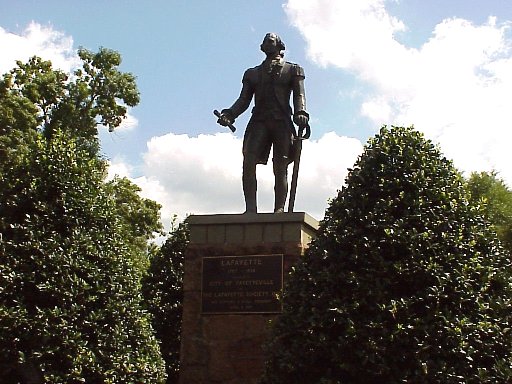
STATUE OF LAFAYETTE
Appreciation is given the Cumberland
County Public Library, NC Historical Department for their cooperation.

  
|